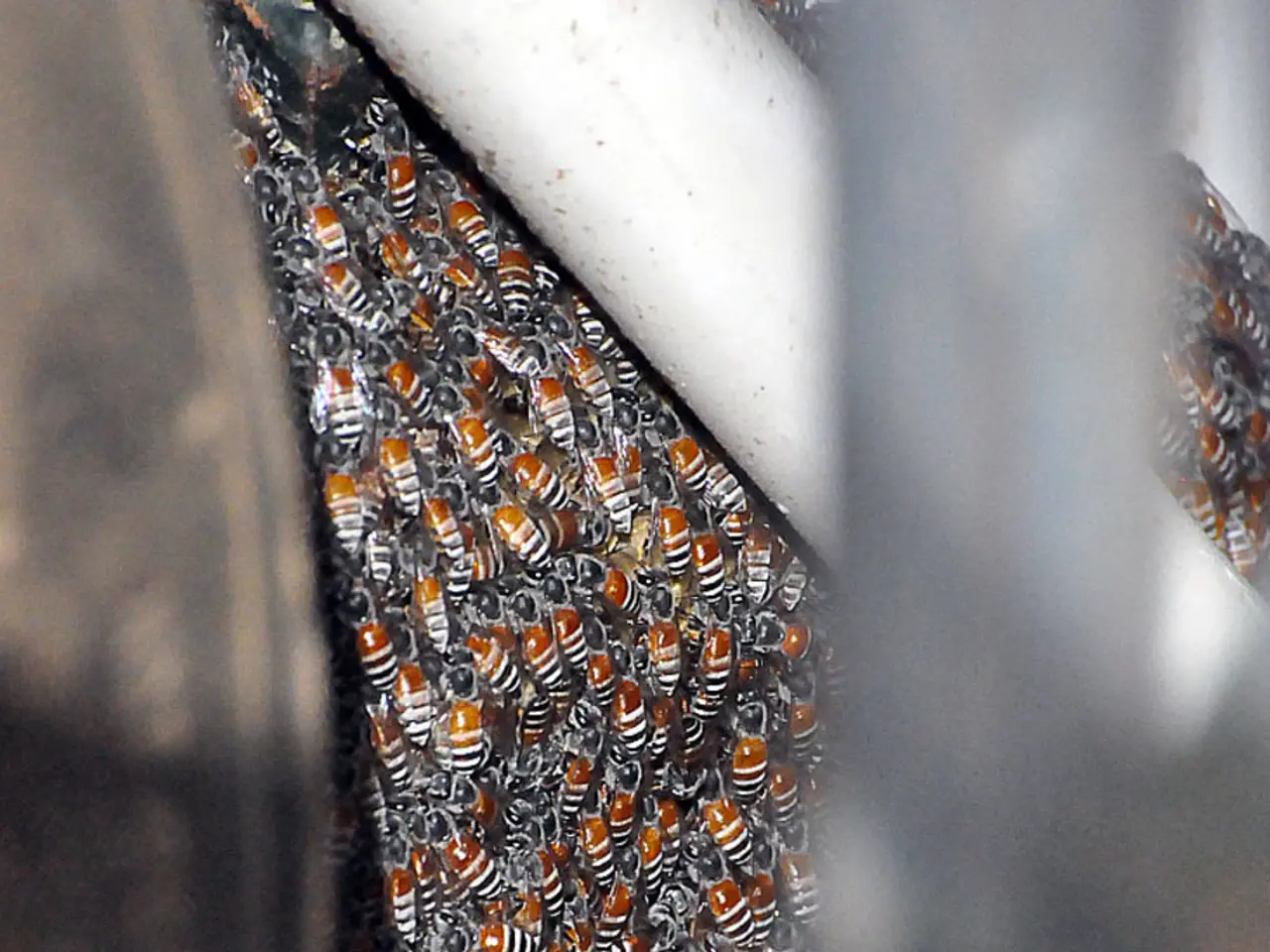Wasp Sting Relief: Exploring Pain-Easing Solutions
In the event of a bee or wasp sting, prompt and proper first aid can help alleviate discomfort and prevent complications. Here's what you should know.
First, remove the stinger quickly by scraping it out with a hard object, such as a fingernail or a plastic card, taking care not to pinch or squeeze. This step is crucial to prevent additional venom from being released. Clean the affected area with soap and water, and apply a cold compress or ice wrapped in a cloth for 10–15 minutes to reduce pain, itching, swelling, and inflammation.
Over-the-counter remedies like baking soda paste or aloe vera can also provide symptom relief. If the sting site becomes infected, seek immediate medical attention.
When it comes to home remedies, onions can offer a cooling effect, but be cautious as they contain acid that may cause skin irritation if left on for too long.
For individuals with a known allergy to insect stings, carrying an epinephrine auto-injector (EpiPen) is highly recommended.
First Aid Steps:
- Remove stinger promptly by scraping (do not squeeze).
- Cleanse sting site with soap and water.
- Apply cold compress/ice for 10–15 minutes (wrapped to avoid cold burns).
- Use home remedies (e.g., baking soda, aloe vera) for symptom relief.
- Elevate limb if stung on an arm or leg to reduce swelling.
- Take oral antihistamines or pain relievers if needed, following product instructions.
When to Consider it an Emergency:
Seek urgent medical help if the person shows any signs of anaphylaxis, a severe allergic reaction that can rapidly be life-threatening. Symptoms include:
- Difficulty breathing or swallowing
- Swelling of face, lips, tongue, or throat
- Rapid heartbeat or dizziness
- Sudden drop in blood pressure or loss of consciousness
- Widespread hives or rash
- Severe swelling or pain beyond the sting site
If anaphylaxis is suspected, use an adrenaline (epinephrine) autoinjector immediately if available, then call emergency services (000 in Australia) while keeping the person calm and lying down.
Key Points:
| Treatment Step | Description | |----------------------|-------------------------------------------------------| | Stinger removal | Scrape out gently, do NOT pinch or squeeze | | Cleaning | Wash with soap and water | | Cold compress | Wrap ice, apply 10–15 min to reduce swelling and pain | | Symptom relief | Baking soda, aloe vera, antihistamines as needed | | Emergency signs | Breathing difficulty, swelling, fainting require urgent care and adrenaline administration |
In summary, prompt first aid for a bee or wasp sting involves removing the stinger, cleaning the area, applying a cold compress, and using home remedies for symptom relief. If an individual experiences a severe allergic reaction or an infected insect sting site, seek immediate medical attention.
Maintaining overall health and wellness includes being mindful of mental health, and proper first aid can serve as an essential aspect of this. In the context of bee or wasp stings, science suggests the importance of quick and appropriate first aid steps to mitigate discomfort and reduce the risk of complications. These steps may include nutrition-related methods, such as consuming antihistamines for symptom relief.




